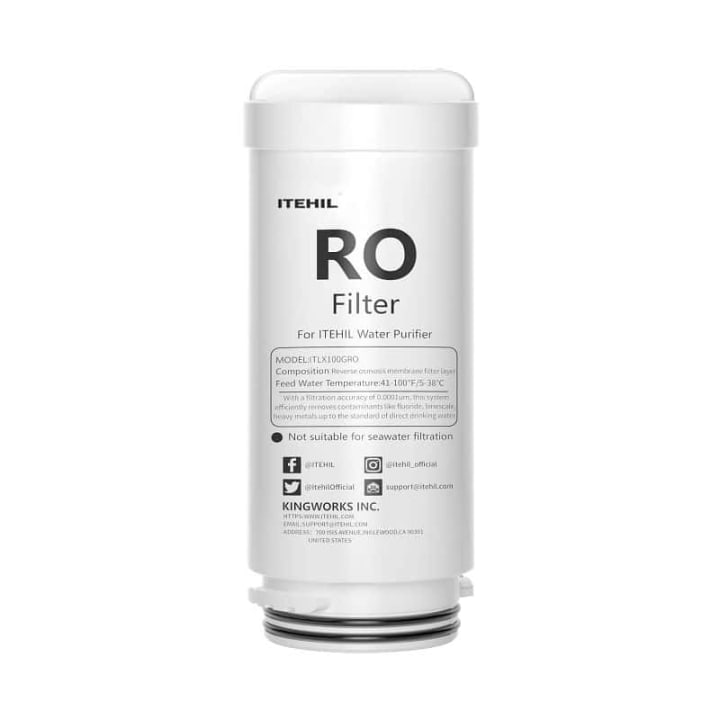Can water filters filter out microplastics
How to filter microplastics

What are microplastics?
Microplastics refer to plastic fragments and particles with a diameter of less than 5 mm. This concept was first proposed by Thompson et al. of the University of Plymouth in the UK in 2004 to describe plastic fragments in marine water and sediments. The particle size of microplastics ranges from a few microns to a few millimeters, and the shapes are diverse. They are usually difficult to distinguish with the naked eye, so they are figuratively called "PM2.5 in the sea". The sources of microplastics include primary microplastics, such as microplastic particles contained in cosmetics, and secondary microplastics, which are smaller particles formed by the decomposition of large plastic waste through physical, chemical and biological processes.
Is tap water full of microplastics?
Whether tap water is full of microplastics is a complex issue with no clear answer.
Evidence supporting the presence of microplastics in tap water:
Limitations of water treatment processes: Traditional tap water treatment facilities may not be able to completely remove all microplastics.
Prevalence of plastic pollution: Widespread use of plastic products has led to a large amount of microplastics in the environment.
Evidence not supporting the presence of microplastics in tap water:
Differences in research results: Microplastic concentration results obtained from different studies vary greatly, which may be related to different sampling methods, analytical methods and water sources.
Challenges in detecting microplastics: Detecting microplastics is a technical challenge that requires the use of special instruments and methods.
Potential sources of microplastics: Microplastics found in tap water may come from other sources, such as water pipes, faucets, and plastic packaging.
Although microplastics may be present in tap water, there is currently insufficient evidence to prove whether they are prevalent and their impact on human health. More research is needed to determine the concentration, source, and potential risks of microplastics in tap water.
Does distilled water contain microplastics?
Distilled water should theoretically be free of microplastics. The distillation process is the process of heating water to boiling, then collecting the vapor and cooling it to condense it into liquid water. This process can remove most dissolved substances and suspended particles, including microplastics.
However, the following factors may affect the microplastic content of distilled water:
The material of the distillation equipment: If the distillation equipment uses plastic materials, microplastics may be released into the distilled water.
Contamination during the distillation process: During the distillation process, microplastics in the air may enter the distilled water, or microplastics may exist inside the distillation equipment.
Storage of distilled water: Even if distilled water does not contain microplastics, it may be contaminated during storage.
Therefore, although distilled water should theoretically be free of microplastics, in fact, trace amounts of microplastics may be present. In order to minimize the contamination of microplastics, it is recommended to use distillation equipment made of glass or stainless steel and perform distillation operations in a clean environment.
How to detect microplastics in drinking water?
Visual analysis method: Observe the sample with the naked eye and tweezers, and identify non-plastics based on characteristics such as color and hardness. This method is suitable for the detection of larger particles of microplastics.
Spectroscopic method: Including Fourier transform infrared spectroscopy and Raman spectroscopy. These two methods can be detected by analyzing the molecular structure characteristics of microplastics. Its Fourier transform infrared spectroscopy is suitable for preliminary investigation, and Raman spectroscopy has high sensitivity and high accuracy.
Thermal analysis method: By measuring the mass loss of microplastics during heating, gas release and other parameters, it is determined whether the sample contains plastics.
Particle size distribution measuring instrument method: Use equipment such as particle size distribution measuring instrument, particle size analyzer or online particle monitor to detect microplastics in water. By measuring the size and number of particles, the content of microplastics in water can be inferred.
How to remove microplastics from tap water?
There are several ways to effectively reduce its content:
Reverse osmosis water filter: It can effectively remove microplastics and other impurities, but the price is high and the filter element needs to be replaced regularly.
Activated carbon water filter: It can absorb microplastics in water, but the effect may be limited for smaller microplastics.
Ceramic water filter: It has a small filtration pore size and can remove most microplastics, but the price is relatively high.
Nanofiltration membrane water filter: It can remove smaller microplastics, but the technology is relatively complex and the price is higher.
Boiling: Boiling can kill bacteria, but it cannot remove microplastics. In theory, boiling can melt or decompose some microplastics, but it cannot completely remove them.
Freezing: Freezing water and then melting the ice cubes can remove some microplastics because microplastics will not completely melt into the ice.
Related Reading: How to remove microplastics from drinking water?
Which water filters can remove microplastics?
Whether you are at home or outdoors, reverse osmosis water filter cartridges can effectively remove most impurities and harmful substances. Reverse osmosis water filters can filter safer and healthier drinking water. There are many types of reverse osmosis water filters on the market, and ITEHIL reverse osmosis water filters will be your first choice.

ITEHIL reverse osmosis water filter uses PP cotton + activated carbon + reverse osmosis membrane filter element for multiple filtration, portable design, very suitable for outdoor and home emergency use, can filter fresh water in different environments. At the same time, the TDS value of water purified by ITEHIL water purifier is between 0-50, which meets the US drinking water standard.
About the Creator
Allen
Allen is a travel enthusiast and will write more articles related to business, travel, health, and fitness in the future.
Enjoyed the story? Support the Creator.
Subscribe for free to receive all their stories in your feed. You could also pledge your support or give them a one-off tip, letting them know you appreciate their work.






Comments
Allen is not accepting comments at the moment
Want to show your support? Send them a one-off tip.